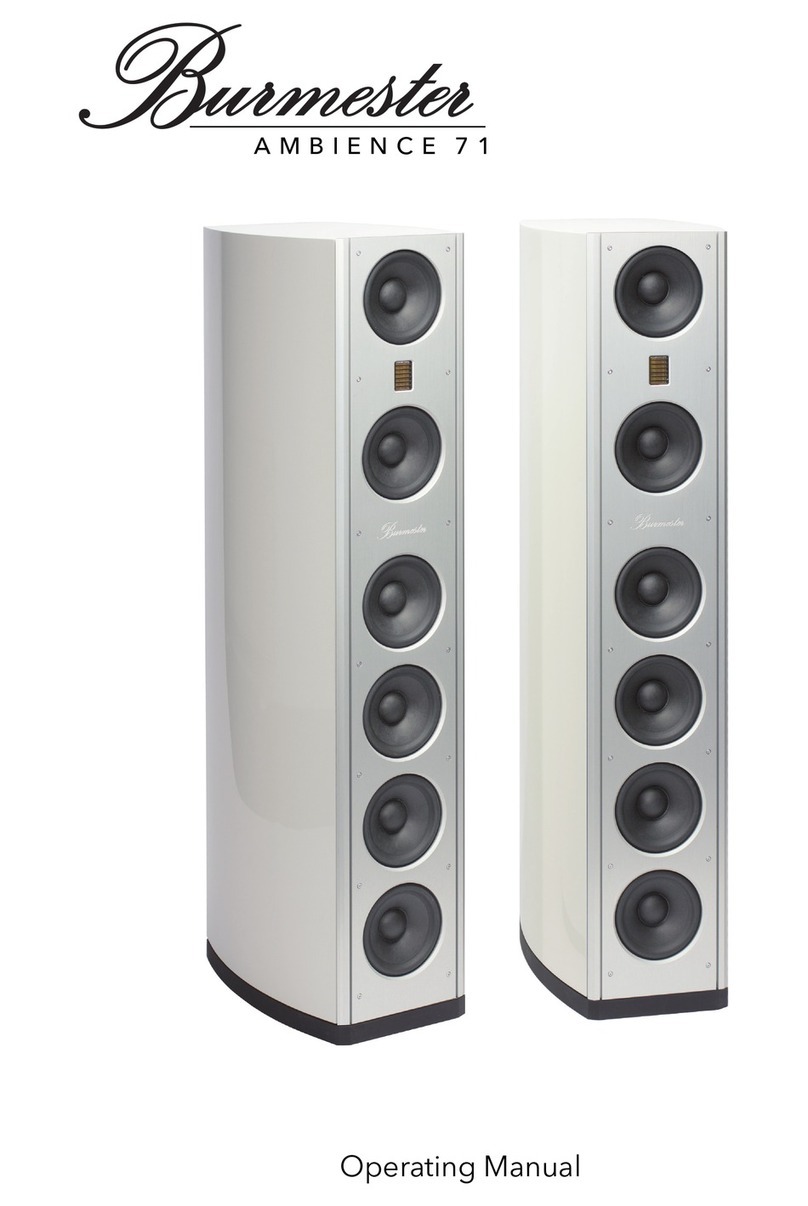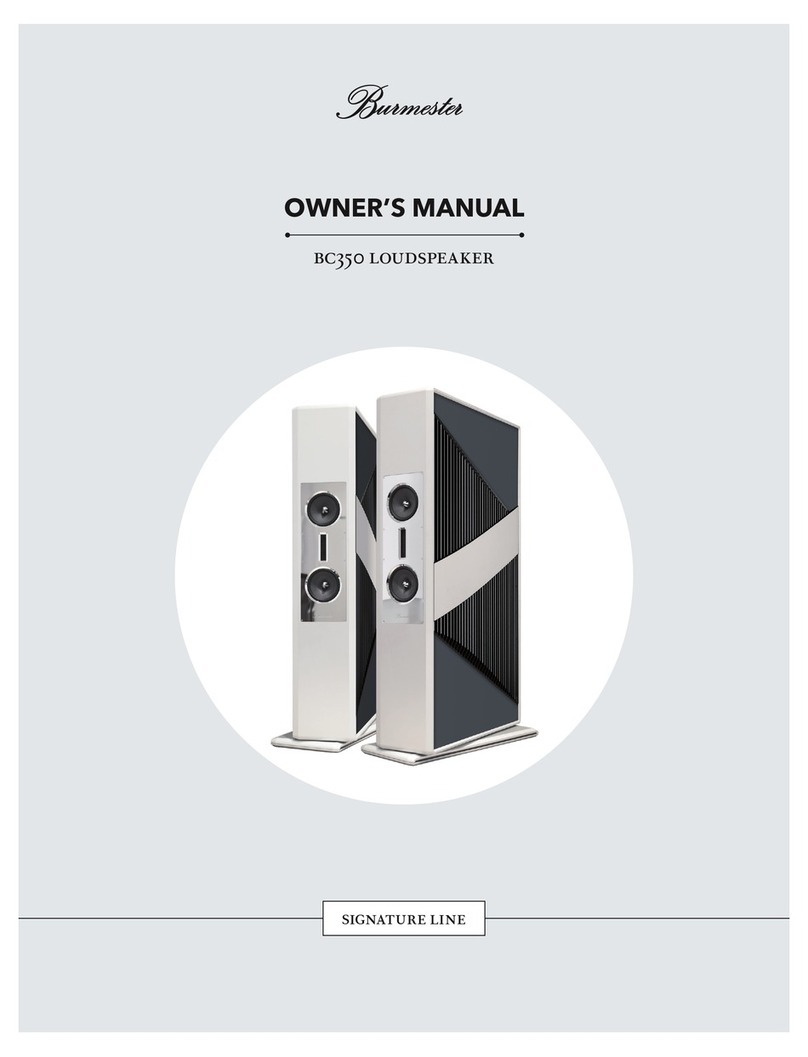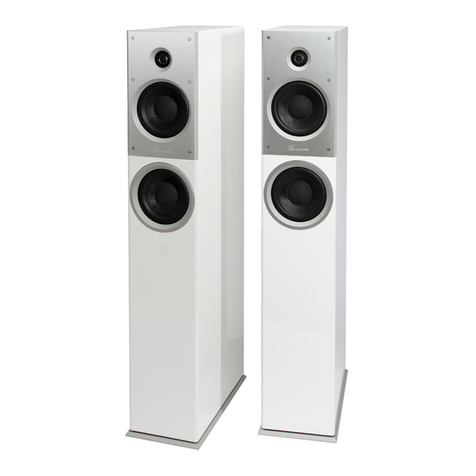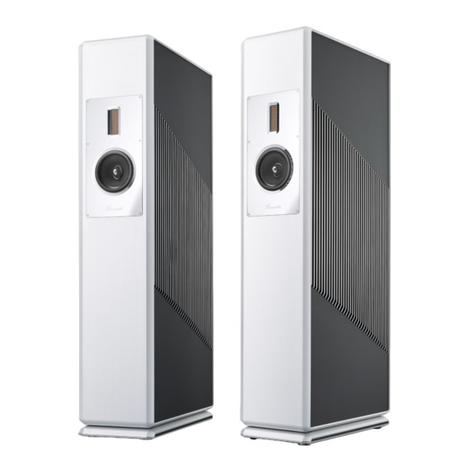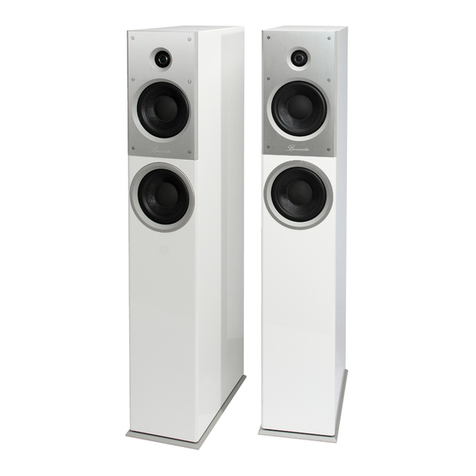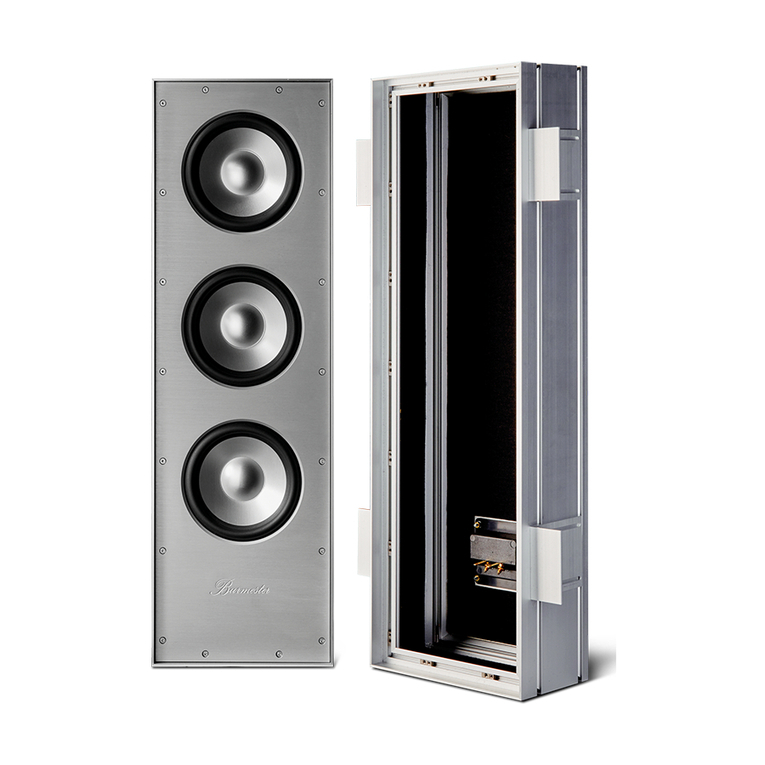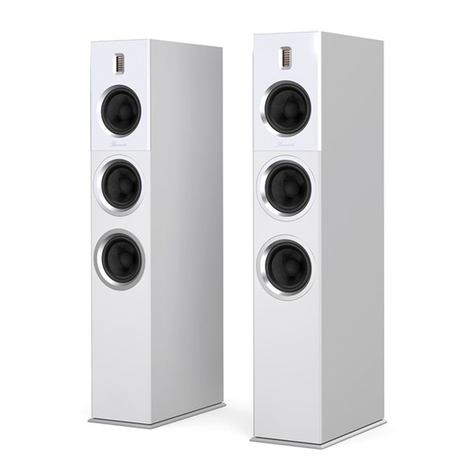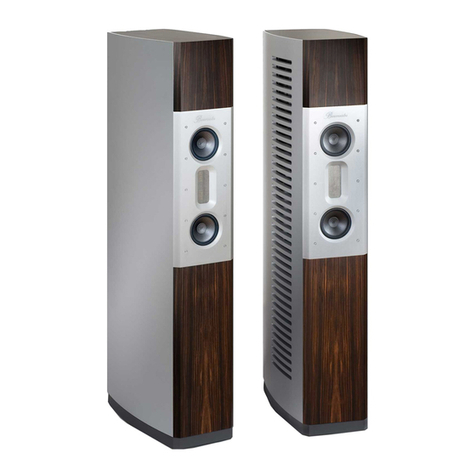
About these LoudspeAkers
B 38 Loudspeaker 5
A L
The B38 loudspeaker is a three-way loudspeaker with lateral woofers mounted in a
bass reflex cabinet. This “side-firing” design provides astonishing dynamic range and
powerful sound – thanks to the individual loudspeakers with very large diaphragms –
while still maintaining a slim and elegant appearance.
A low-midrange driver provides accurate and authentic reproduction from the upper
bass range up to the high frequencies, which are then handled by an AMT tweeter.
AMT stands for Air Motion Transformer with pleated diaphragms.
The B38 loudspeaker delivers clean sound at both low and very high levels,
homogeneous reproduction across all timbres, and impressive spatial sound with
precise imaging of instruments and voices both in width and depth. This is also made
possible by the sophisticated crossover, which ensures that the woofer, midrange
driver and tweeter are in perfect harmony. The crossover is contained in a separate
housing at the bottom of the cabinet to protect it from outside interference. Other
special features of the B38 loudspeaker include a bass switch on the rear panel and a
foam cylinder for sealing the bass reflex tube, both of which can be used to adapt the
bass to the listening environment and your taste.
The highlights:
• Burmester AMT tweeter (Air Motion Transformer) for particularly fine resolution and
excellent level stability in the high frequency range.
• Large low-midrange drivers for precise and three-dimensional playback in the
frequency range containing the majority of music signals.
• Powerful bass speakers for punchy but clean bass all the way down to the lowest
frequencies.
• Option to adjust the sub-bass level (room adaption).
• Separate connections for the bass and midrange/treble branches enable bi-amping
for maximum stability of the sound image.
• Sophisticated, vibration-damped cabinet with multi-layered walls and separate
housings for midrange drivers, tweeters and crossovers.
Dear music lover,
Congratulations on your purchase and thank you for choosing Burmester.
You have chosen a product that combines absolute fidelity and uncompromising
quality with technical innovation and maximum versatility.
Before using the product for the first time, we recommend that you read through this
operation manual completely so that you can make full use of the capabilities of this
exceptional audiophile product. Should you still have questions, please contact your
dealer or contact us directly.
We’re always happy to discuss your special requests, no matter how unusual. We love a
good technical challenge.
We wish you an exceptional listening experience.
Your Burmester team
